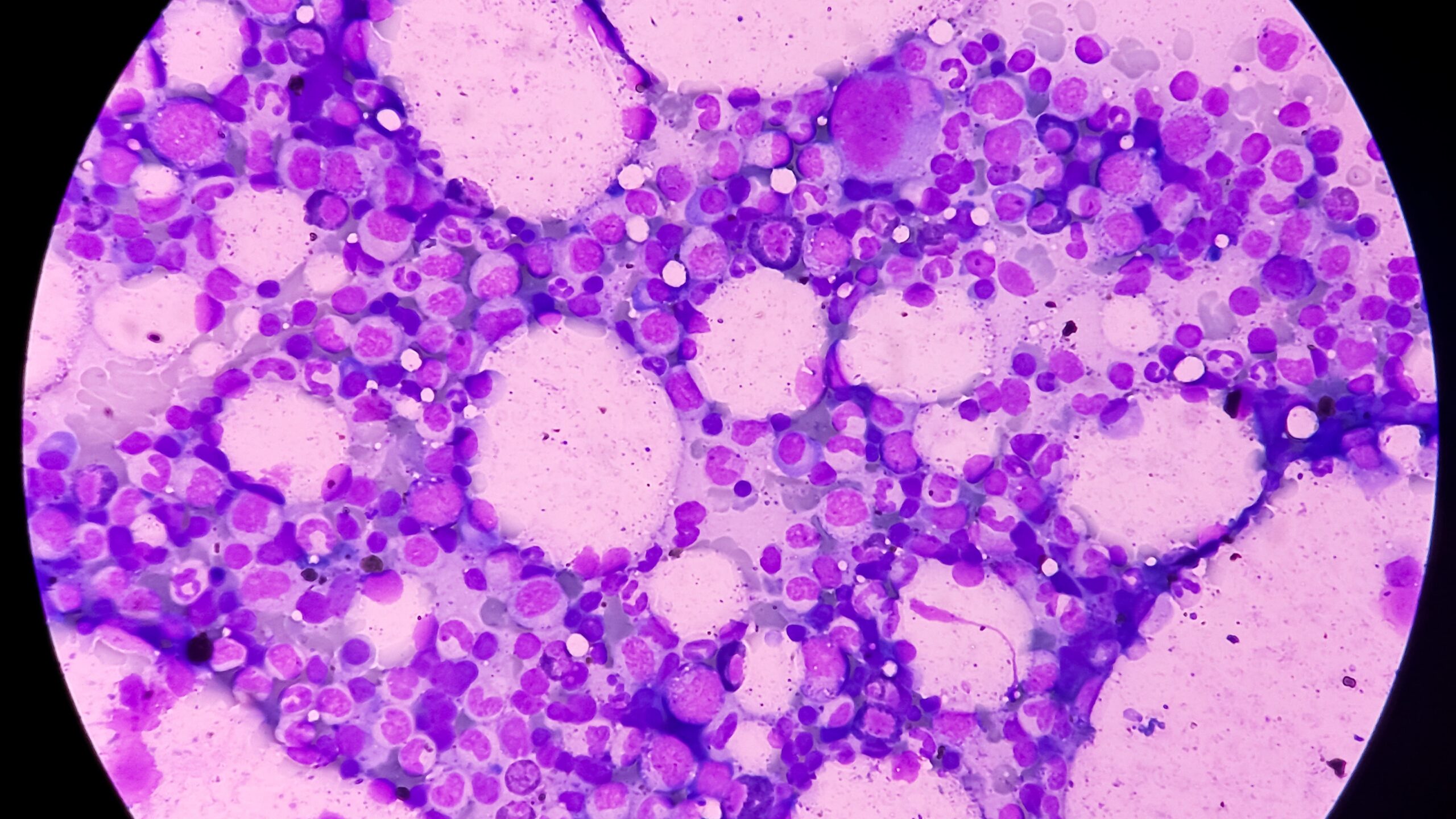
New or worsening anemia following initiation of ruxolitinib does not diminish clinical benefit, according to a study presented at the Society of Hematologic Oncology 2024 Annual Meeting in Houston, Texas.
The findings of a recent pooled COMFORT-I/II analysis suggest that new or worsening anemia following the start of ruxolitinib therapy does not impact spleen volume. To validate COMFORT, researchers assessed data from JUMP, which was a single-arm, phase IIIb, expanded-access trial of 2,233 ruxolitinib patients with myelofibrosis in a simulated clinical setting.
In the post-hoc analysis, researchers stratified patients at baseline based on anemia due to myelofibrosis (hemoglobin <100 g/L) and transfusion status among anemic patients. The key end points of interest were the presence or absence of new or worsening anemia following ruxolitinib initiation at week four, eight, or 12.
The results showed that half of patients had new or worsening anemia up to week 12, with comparable baseline characteristics observed between patients with versus without new or worsening anemia. The researchers observed that week 24 spleen length response rates among patients with versus without new or worsening anemia were 31.5% versus 31.2%, 24.4% versus 27.9%, and 25.0% versus 29.8%, respectively.
By week 24, total scores on the Functional Assessment of Cancer Therapy—Lymphoma for patients with versus without new or worsening anemia were 34.5% versus 34.0%, 32.7% versus 29.6%, and 41.7% versus 32.1%, respectively. The investigators observed similar trends at week 48. For nonanemic patients at baseline, the researchers noted that median overall survival (OS) was not reached in either cohort; however, better OS was observed in those without versus with new or worsening anemia (hazard ratio: 0.56; 95% CI, 0.36‒0.88; P=.01). Also, for patients with both transfusion-dependent or transfusion-independent baseline anemia, no OS difference was observed in those with or without new or worsening anemia (P=.24).
“Consistent with the COMFORT-I/II pooled analysis (n=277), evaluation of 2,233 patients in JUMP indicates that new or worsening anemia following ruxolitinib initiation did not diminish treatment-related clinical benefit,” the researchers concluded.
Reference
Gupta V, Guglielmeli P, Hamer-Maansson JE, et al. The impact of new or worsening anemia on clinical outcomes in 2,233 patients with myelofibrosis treated with ruxolitinib: results from the expanded-access JUMP study. Abstract #MPN-051. Presented at the Society of Hematologic Oncology 2024 Annual Meeting; September 4-7, 2024; Houston, Texas.






 © 2025 Mashup Media, LLC, a Formedics Property. All Rights Reserved.
© 2025 Mashup Media, LLC, a Formedics Property. All Rights Reserved.